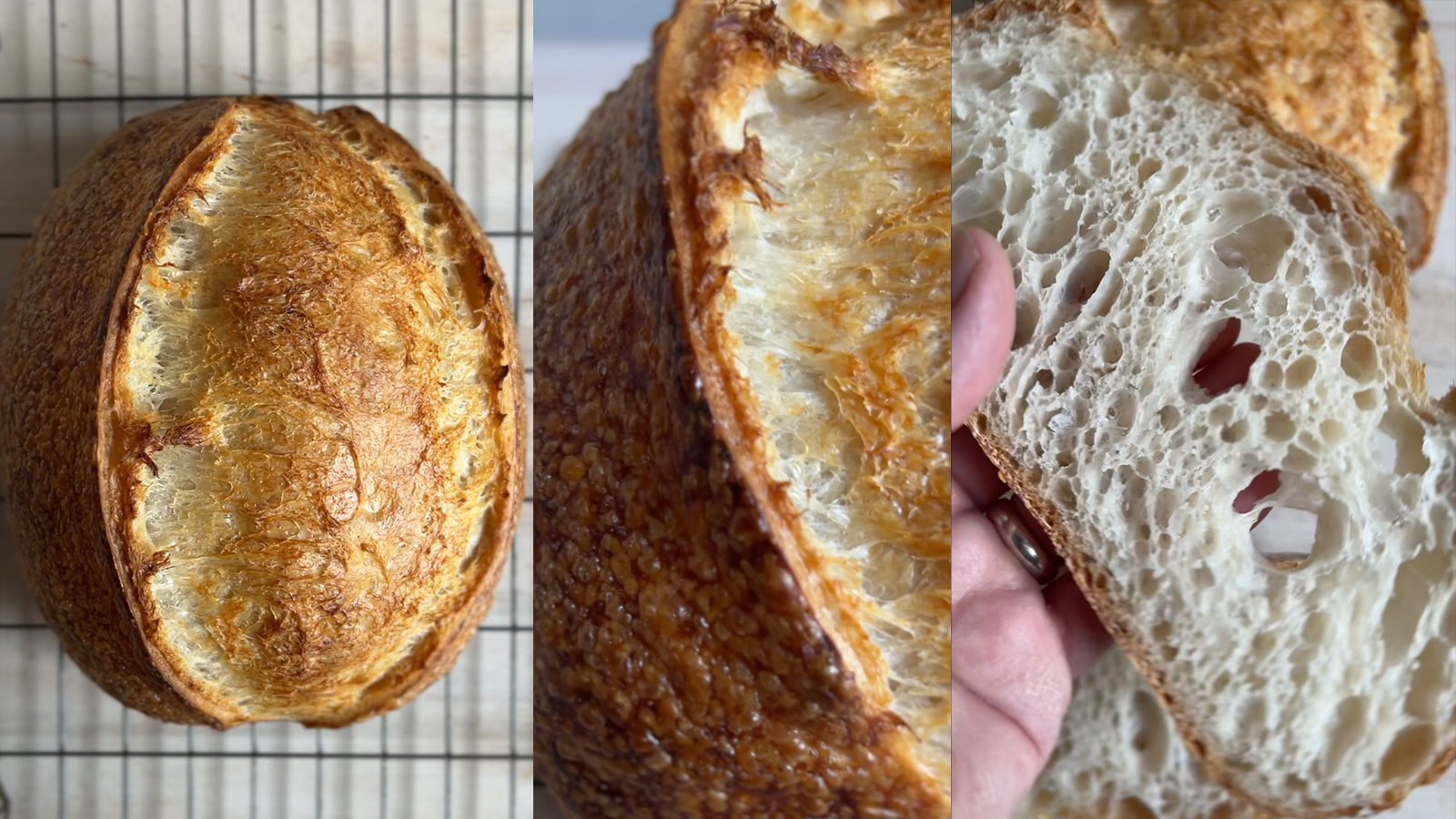Ingredients
preferment
60g sourdough (refreshed within previous 24rs, 1:1 flour/water, bubbling and active)
30g Mulino Marino Organic Type 0 Manitoba-Style Furia Flour
50g water at 28C
For the dough
70g Mulino Marino Organic Type 0 Manitoba-Style Furia Flour
280g Mulino Marino Organic Type 00 Soffiata Strong White Flour
200g water, see temp guide in recipe
For the mixing
50g water see temperature guide in recipe
7g finely ground salt
Crisp with a tender crumb all thanks to beautiful Mulino Marino Type 0 Manitoba "Furia" flour from Italy. One of the world’s great millers producing exceptional flour.
Italian-style pre-ferment sourdough
Crisp with a tender crumb all thanks to beautiful Mulino Marino Type 0 Manitoba "Furia" flour from Italy. One of the world’s great millers producing exceptional flour and this somewhat-simple bread shows of the colour, flavour and texture possible with the flour at its best.
The recipe uses a preferment: a starter that is mixed from your storage starter and is used to then ferment your main dough. The aim of the preferment is to create a starter that is so highly active – at its peak of yeast and bacterial activity – that its fermentation power is at its maximum. To do this, I have made the starter quite liquid as a higher water quantity speeds the fermentation activity (to get geeky about it this allows osmosis, the method where cells move matter though their outer membrane, to happen easier as they’re in a more liquid environment; likewise, when dough or start is mixed with less water the process is slowed down).
Method
Make the preferment: mix all the ingredients for it together with a spoon evenly, cover well and leave to rise for about 3-4 hours at 28-30C until bubbling and active. The easiest way to achieve this temperature is in the Brod & Taylor proofing box.
Make the dough: mix together the two flours until roughly combined then cover and leave for 1 hour.
For the mixing: mix the dough until it is very smooth and elastic, about 5 minutes in the Ankarsrum Mixer. Then slowly add the remaining water, one quarter at a time, mixing it in evenly before adding the next lot. Finally add the salt and mix until combined. The dough should be very smooth and elastic but still cohesive and holding together (if it’s overmixed it turns runny and soft here).
Place in an oiled Dough box – Leave at 26C to rise for 2 hours then give one coil fold. Then leave another 2 hours and give a second coil fold.
Then shape the dough with a little flour into a ball, cover loosely with a cloth, and leave at 20C (not too warm) for about 1 hour to relax. Then shape the dough into a tight cob, place this in a proving basket, cover and chill at 4C overnight.
To bake: Heat the Challenger Bread Pan to 240C, then have the base out of the oven and waiting. Upturn the dough onto a disk of non-stick paper that fits the base of the pan, slash the top lengthways, and lift the paper and dough onto the base of the Challenger pan, and spray the top of the dough directly with a fine mist of water. Take the Challenger Pan top out of the oven, place it over the base, and return the sealed pan to the oven. Bake for 25 minutes then remove the challenger pan lid and bake for a further 15-20 minutes, or more, until as golden and dark as you prefer. You can lower the temperature for the last 15-20 minutes if you prefer a b=more golden crust like the one in the photo above.























